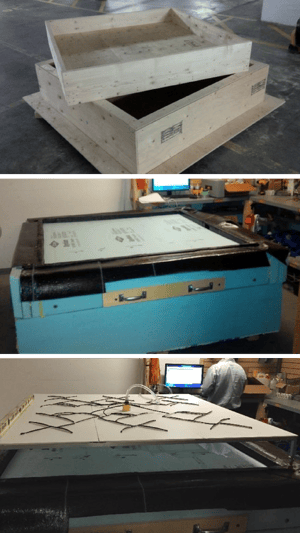Energy use in buildings throughout North America has attracted significant attention over the past decade. In cold marine climates, rainwater management is also a critical aspect of the building enclosure and energy performance. Various drainage practices used for low slope inverted roofing are often designed without quantified data available regarding the cold rain affects on the thermal performance of the systems.
The effect of cold water under the roof insulation and its impact on the effective thermal performance in inverted roofs is well researched. The aim of this project was to develop a better understanding of the impact of cold rain events on the effective thermal performance of inverted roofs in an effort to develop best practice inverted roofs design guidelines.
 The project included the construction of a ‘calibrated hot box’ to mimic the temperature difference between interior and exterior winter conditions. The evaluated roof assemblies consist of typical inverted roofs (membrane, drainage layer, insulation, filter fabric and ballast). Evaluation was conducted with different variables including rain rates, insulation orientation, insulation gaps, and different types of drainage mats and the exclusion of drainage mat below the insulation. Later evaluations included a loose-laid moisture shedding layer above the insulation and changing the roof slope.
The project included the construction of a ‘calibrated hot box’ to mimic the temperature difference between interior and exterior winter conditions. The evaluated roof assemblies consist of typical inverted roofs (membrane, drainage layer, insulation, filter fabric and ballast). Evaluation was conducted with different variables including rain rates, insulation orientation, insulation gaps, and different types of drainage mats and the exclusion of drainage mat below the insulation. Later evaluations included a loose-laid moisture shedding layer above the insulation and changing the roof slope.
Evaluations have indicated that although the drainage capacity and leakage rates of different roof assemblies depend on a number of factors, the majority of rainwater drains at the membrane level in all test scenarios. Based on the analysis completed, the results show that different drainage scenarios do have an impact on the overall effective thermal performance of inverted roof assemblies. The most significant heat loss and unexpected results was the increased heat loss when the drainage mat was removed and insulation was in direct contact with the roofing membrane.
This paper was presented at the BEST 5 Conference in April 2018. You may access the paper in full at the link below.

